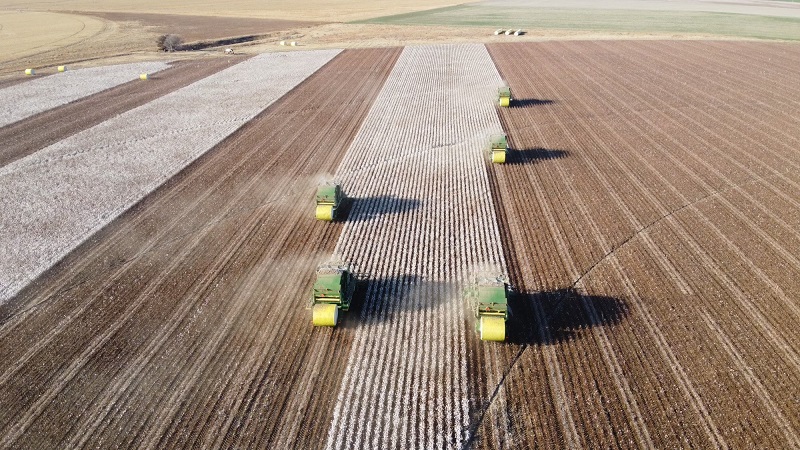Cotton Trading Strong, Volume Light, Prices Keep Climbing
Cotton trading settled the week on a strong note as Friday’s (Aug. 26) trading enjoyed a 350+ point move to the upside, settling at 117.68 cents. One highlight was that the December 2023 contract – next year’s crop – climbed above 90 cents.
The market remains in full back and fill mode, working from a low of 112 to a high 119 cents – not unexpected since the August USDA world supply demand report released earlier this month. Market volume, while experiencing some very good days, remains on the light side as sellers are fewer than normal. Too, most sellers find it necessary to go to the options market to cover their short positions. This entails more market savvy and more research backing; thus, limiting the number of traders.
The market is signaling that it wants to move higher, first looking to break the 120-cent barrier and then push toward 125 cents. There are ample funds waiting in the wings wanting to take profits and reestablish positions for additional legs higher. Should the U.S. and/or world crop become appreciably smaller, then the life of contract high in the 133-cent area becomes an objective. Nevertheless, given that the price advance is totally footed on the supply side of the price equation, supply reductions will have to be significant if the market is to crack December’s life of contract high.
Major world producers continue to report production shortfalls, but the market is looking to USDA’s next world supply demand report on Sept. 12 for confirmation before moving above the 120-122 cent level. I somewhat dislike disclaimers as part of a price prediction, but Mother Nature seems to be throwing nothing but curve balls as the crop moves closer to harvest.
It should be noted that the Mid-South crop may be working smaller. The big Texas/Oklahoma/Kansas crop, already reduced by more than half due to the widespread Southwestern drought, continues to suffer from extreme drought. The Mid-South and Southeast desperately need an open fall if those regions are to reach their potential. The regions were plagued by very excessive rainfall on the week, with so called 500-year and 1000-year rainfall totals in some areas.
USDA transitioned to an electronic based reporting system for cotton export sales and shipments this week. It failed…failing so miserably they have not yet been able to issue an export report. However, the report, when finally compiled, is not expected to be news as cash business around the world is basically hand to mouth and mills struggle to find demand and to work off inventory. However, Pakistan is expected to be an excellent buyer throughout the year due to massive flooding problems – and may have been a big buyer on the week.
The On-Call report shows mills are betting on lower prices, just as they did last year. That proved to be a disaster and is setting up to be very problematic this year. Some mills are actively fixing prices, basis the December futures contract, and that will protect them against rising prices. Yet, they should probably be even more active.
To their credit (and assuming last week’s statement that “short crops have long tails”), delaying fixations out to May and July could prove to be mildly beneficial. That is, the May and July 2023 futures contracts should find very strong price resistance in the mid-130s and below. Yet, the great danger for mills is to delay “too long” and get caught in a price squeeze. The market would likely prefer mills do more price fixing in the short term with the December futures price at its current level.
The market has climbed nearly 1,000 points during the past two weeks. The big August crop reduction surprise is now just a stale fundamental. Thus, the market needs fresh ammunition to move much higher. As stated, that will probably come in the form of the September supply demand report.
I want to be a wild bull. Yet, I am fairly wimpy past the 125-cent mark, and it will take a bit of work to get there. But, if the world crop shrinks another 2-3 million bales – and such is possible – then add another dime to that. We must be cautious as the market has already been heavily influenced by weather disasters, which seem to be a near commonplace.
Give a gift of cotton today.









